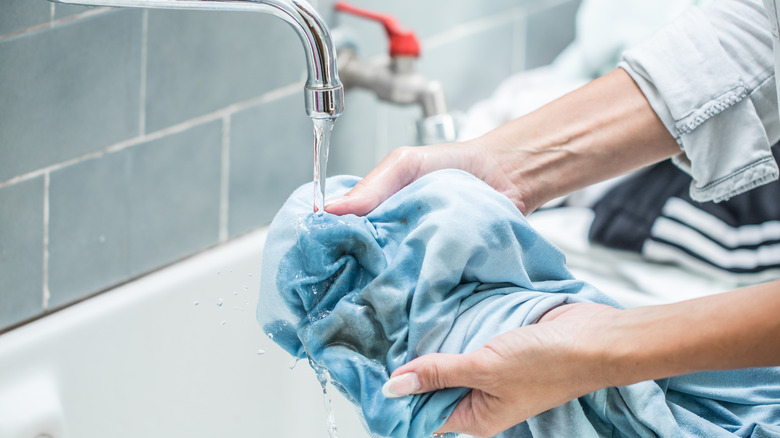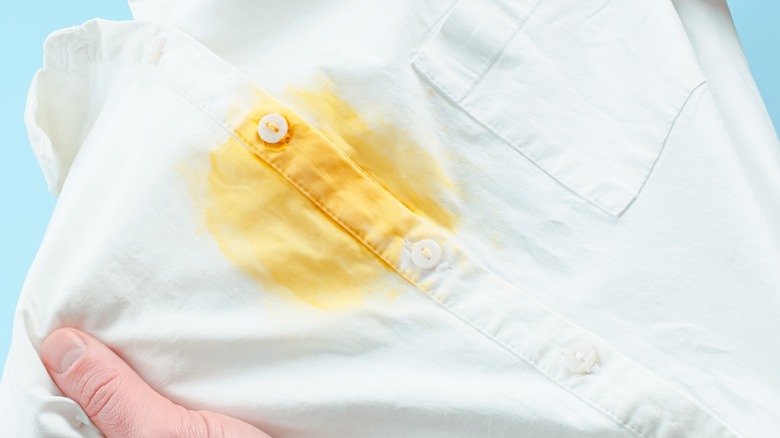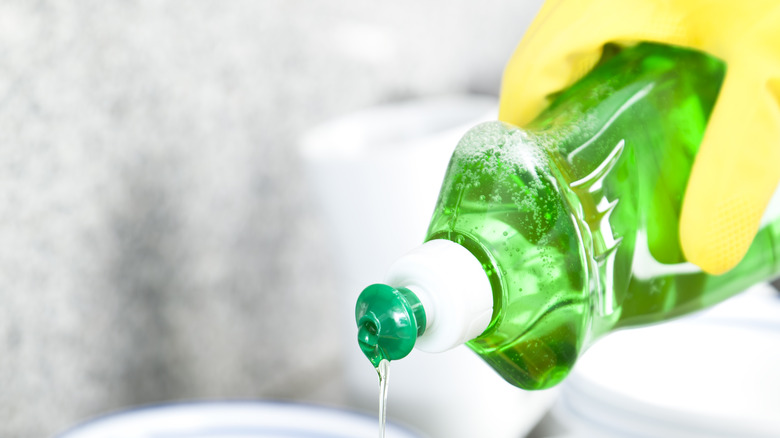The Messy Seasonal Stain You Shouldn't Try To Remove With Water
As the weather gets warmer, the days get longer, and your garden starts to require more attention, you might end up with some orange or yellow stains on your clothes. If you've been growing flowers or just like to keep fresh flowers in your home, pollen stains are likely a common occurrence. These stains are one of the many things you should never actually clean with water. Surprisingly, treating pollen stains with water could actually make them worse.
Many stains can be cleaned up with the help of water, but in the case of pollen, water will cause the grains to go further into the fabric or spread throughout the material. This is because pollen is a fine powder that can be spread by the water. Rather than getting the stain wet, trying to remove the substance as soon as possible and while the fabric is dry is the best way to save your clothes. This method works really well for small amounts of pollen, but larger amounts could require pretreatment with detergent or rubbing alcohol before being washed.
Removing a light seasonal pollen stain
Your first course of action when treating a pollen stain should not involve rinsing it off; rather, just try to shake the powder off. While it may be tempting to try to dust the powder off with your hands, the oil from your skin could set the stain even more, and the movement might just spread the pollen across the fabric. Take the clothing item outside and shake it vigorously to knock off the particles. This will help to remove the loosest bits of pollen, but some might still cling to the material.
To get rid of the rest of the pollen, a small vacuum or piece of tape could be an easy solution for eliminating the stain. Start by taking a piece of masking tape or another type of very sticky tape and gently press it against the stain. When you pull the tape off the fabric, the pollen will come with it. If there is any pollen remaining, a handheld vacuum might be able to suck up the rest. For those who only have full size vacuums, try using the hose. Ensure you don't press the vacuum directly against the fabric but instead keep it a short distance away. When dealing with pollen from indoor plants, misting your fresh flowers with hairspray will help keep the pollen grains from falling off.
Treating a messy pollen stain
If shaking the fabric, vacuuming, and tape isn't enough to get rid of all the pollen, you'll need to pretreat the stain as soon as possible. Pollen is an oily substance, so using a degreaser like dish soap is a great option. Laundry detergent should also be effective as a pretreatment, as well as rubbing alcohol. Before you begin treating the stain, make sure not to wet it, as this will cause the pretreatment not to work as well.
If you're using detergent or dish soap on the stain, apply the cleaner to the area and make sure it completely covers the stain. Let it sit for five minutes to ½ an hour, depending on the severity. Now, you can use water that's slightly warm to rinse out the soap before washing the garment. With alcohol, simply put it on a cloth and gently dab the stain until it begins to lift. After you've washed the clothing in the hottest water possible, you'll want to let it air dry since electric dryers can exacerbate stains. If the stain persists, repeat the steps until it's gone. Making an effort to keep pollen out of your home may also lessen the chances of your clothes becoming stained.


